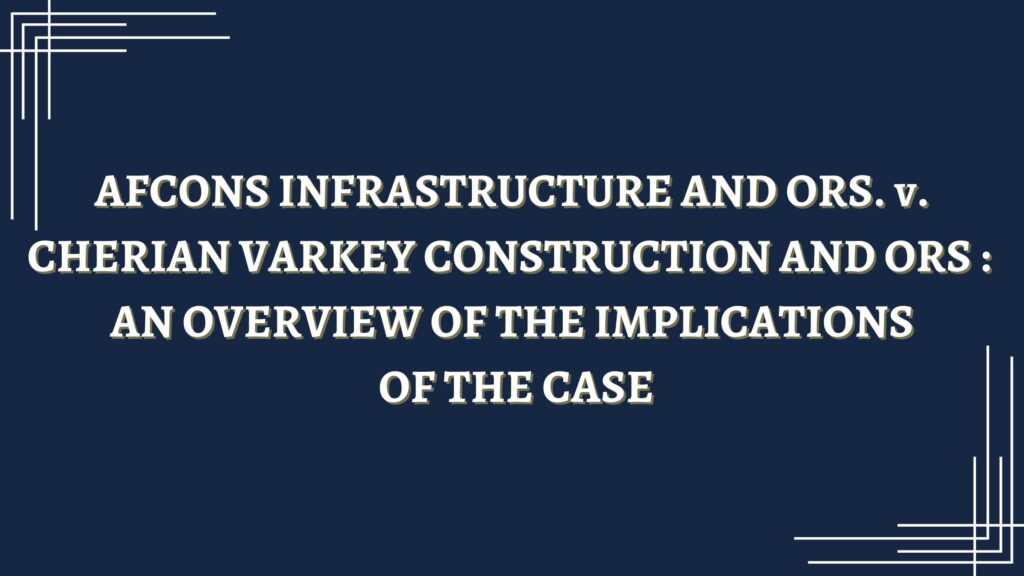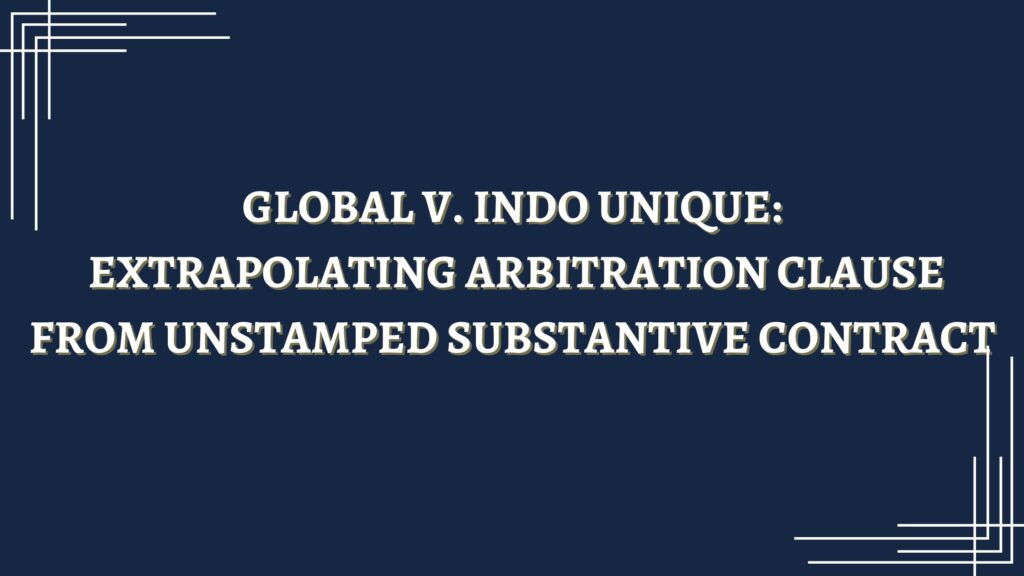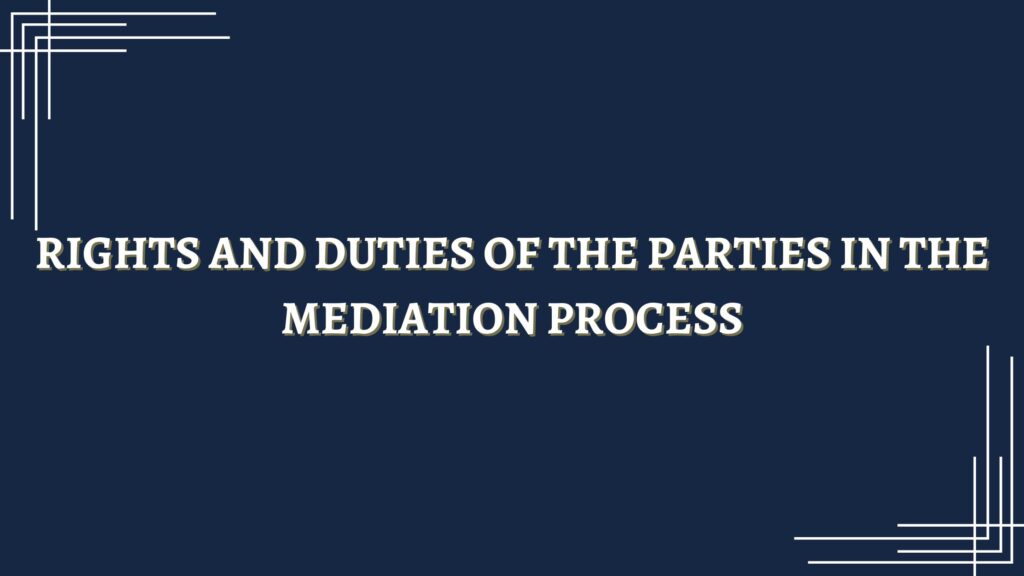Mediation of Consumer Disputes Date: 20/10/2020 Author: Ibban Javed Institute of Author: NLIU, Bhopal Year: 3rd Introduction Litigation is often a resource-intensive endeavor that involves the investment of large amounts of money, time, and other resources that consumers have limited access to. Most consumer disputes that lead to litigation are tilted in favor of the relatively dominant producers by default, stemming from the disparity in access to these resources. Litigation is neither a cost-effective solution to consumer disputes nor does it save time – India Today reports that the average pendency of a civil suit in India is about six years[1], which is much longer than what most consumers can dedicate themselves to. This is an issue that has been deliberated upon since the introduction of the three-tier consumer dispute redressal mechanism of The Consumer Protection Act, 1986 until it was finally addressed in The Consumer Protection Act, 2019 which introduced mediation as an effective means to resolve consumer disputes. Mediation is an alternative dispute resolution (ADR) mechanism whose purpose is to settle disputes between parties amicably and efficiently through the mutual understanding of all parties involved. As part of the process, the parties discuss their disputes while an impartial third-party – the mediator — facilitates communication between them until a mutually agreeable settlement is reached. The Consumer Protection Act, 2019 makes provisions for mediation in cases of consumer disputes under Chapter V. Further, the Draft Consumer Protection (Mediation) Regulations, 2019 issued by the Department of Consumer Affairs under the Ministry of Consumer Affairs, Food and Public Distribution, Government of India proposes the framework for the mediation procedure to be employed in the settlement of consumer disputes, as per the provisions of the Consumer Protection Act, 2019. Sections 37 and 38 of The Consumer Protection Act, 2019 With a change in how consumers and producers transact and the evolution of e-commerce, multi-level marketing schemes, and other nouveau approaches to do business, The Consumer Protection Act, 1986 required an overhaul that would encompass situations such as those listed above to better protect the interests of consumers. The Consumer Protection Act, 2019 was passed to address these concerns and to better protect consumers at a time when producers could take advantage of the legal grey area that the lack of relevant legislation gave rise to. The revamped Act envisaged the establishment of a Central Consumer Protection Authority that would seek to protect the interests of consumers and enforce their rights while making interventions as may be necessary to prevent unfair trade practices. Sections 37 and 38 of the Act make provisions to simplify the adjudication process of consumer disputes by employing mediation, an alternative dispute resolution mechanism. This addressed the primary shortcoming of the erstwhile Consumer Protection Act of 1986, which was the long delay in the disposal of cases presented by the three-tier redressal system. Section 37 provides that post-admission of the complaint and at the first hearing if the District Commission believes that has elements of a settlement that may be acceptable to the parties, it may direct the parties to give it consent to have the dispute settled by mediation within five days and if such consent is given, the District Commission may then refer the dispute for resolution through mediation as per the provisions of Chapter V.[2] Section 38 details the procedure on the admission of a complaint and allows the District Commission to: Refer the copy of the admitted complaint to the opposite party and seek their version of the case within thirty days Examine the evidence and seek its analysis by a designated laboratory Provide a reasonable opportunity for parties of both sides to represent their cases Decide the case on the merit of the affidavit and documentary evidence on record Pass interim orders as per the situation Have the same powers as those vested in civil courts as per the Code of Civil Procedure, 1908, insofar as this section is concerned. Chapter V of the Consumer Protection Act, 2019 The provisions mentioned herein are subject to the Draft Consumer Protection (Mediation) Regulation, 2019. §74 Establishment of consumer mediation cell[3] This section allows the State Government to establish consumer mediation cells that shall be attached to the State and District Commissions of each state. Likewise, it allows the Central Government to establish such consumer mediation cells that shall be attached to the National Commission as well as each of the regional benches. Further, it provides that the consumer mediation cell must maintain lists of the empaneled mediators, cases handled by the cell, record of proceedings, and any other information that might be required as per regulations. §75 Empanelment of mediators[4] Section 75 details the process by which mediators may be empaneled, that is, by recommendation of a selection committee consisting of the President and a member of either the National, State, or District Commission as the case may be. The panel of mediators as nominated by the selection committee mentioned above is valid for five years and can be considered for re-empanelment for a maximum of two terms. The specifics of the qualifications of the mediators, fees payable to them, training to be undergone, and other terms and conditions of empanelment are subject to the Draft Consumer Protection (Mediation) Regulations, 2019. §76 Nomination of mediators from panel[5] Section 76 provides that the District, State, or National commissions must consider the suitability of a mediator for the present case before nominating to resolve a dispute. §77 Duty of mediator to disclose certain facts[6] As per the provisions of Section 77, the mediator is dutybound to disclose any personal, professional, or financial interest that he may have in the outcome of the dispute. He is also required to furnish the circumstances that may raise doubt on his impartiality as a mediator. §78 Replacement of mediator in certain cases[7] Based on what is disclosed by the mediator, the District, State, or National Commissions are vested with the power to replace such a mediator if a conflict of interest






